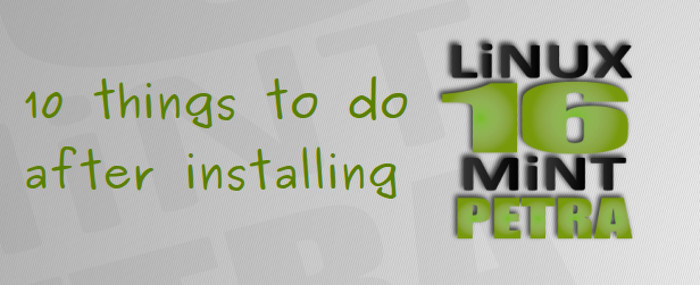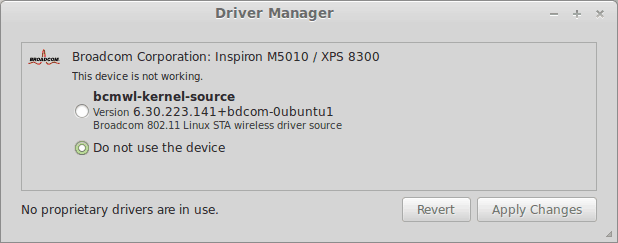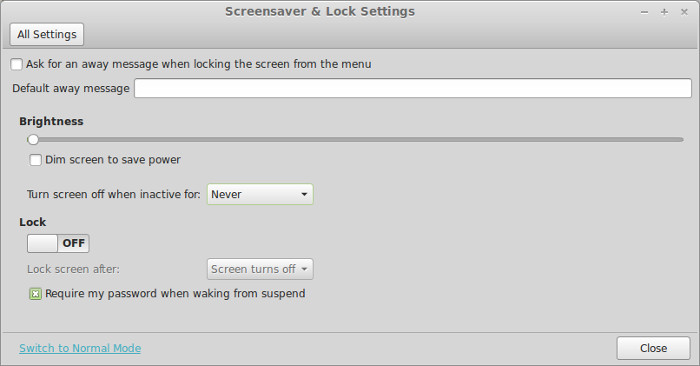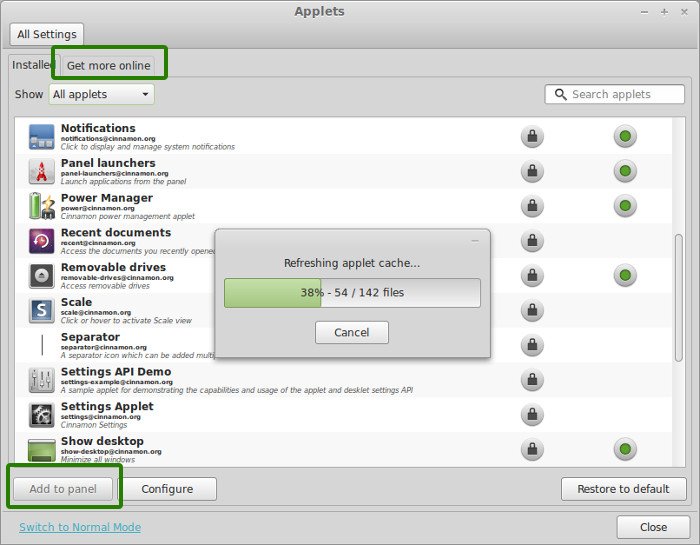
Linux Mint 16 Petra has been released recently. Based on Ubuntu 13.10, Linux Mint comes with Cinnamon and Mate desktop environments (separately). I was using Ubuntu 13.10 before and replaced it with Linux Mint 16 to try my hands on it. [Read: How to install Linux Mint 16 in dual boot with Windows 8].
After installing any new OS, the first thing that comes to the mind is, what next? Previously, I have written on similar topics on things to do after installing Ubuntu 13.10 and things to do after installing Elementary OS Luna. In this post we shall see what are the must to do things after installing Linux Mint 16 Petra.
Things to do after installing Linux Mint 16 Petra
I have written this article for Linux Mint with Cinnamon but it should be equally applicable for Mate version as well. Lets have a look:
Update Linux Mint 16:
First and foremost thing to do is to update the OS. Since there will be sevreal updates released since the OS image was released, it is suggestable to do so. Of course, Update Manager will pop up some time soon to remind you of available updates but why not do it right now before going to install several other things?
Open a terminal (Ctrl+Alt+T) and use the following command:
sudo apt-get update && sudo apt-get upgradeEnable touchpad click:
First strange thing that you’ll notice (if using a laptop) is that touchpad click is not working in Cinnamon and if you want to click on something, you will have to use the touchpad button to click. This is not at all a friendly behavior as a regular user is habitual of tapping on the touchpad to click.
Cinnamon has this behavior disabled by default, for reasons beyond my comprehension. You can easily enable it by going to System Settings-> Hardware-> Mouse and Touchpad-> Toucpad tab-> Enable mouseclicks with touchpad. In case you are not sure how to follow this path, refer to this screenshot tutorial to fix touchpad click not working in Linux Mint.
Install additional drivers in Linux Mint 16:
Linux Mint is an excellent Linux distribution for beginners. It packs all the necessary things to run it out of the box. But it does not mean you may not have troubles. Linux desktops are notorious for hardware drivers issue. Third party proprietary drivers are not installed by default. It is advisable to look if there are any proprietary drivers available for your system. This will avoid the troubles with wireless and graphics related common issues.
Go to System Settings and under the Administration section, choose the Device Drivers option. If there are any additional drivers available for your system, it should be listed here.

Improve battery life and reduce overheating:
Feeling the heat from your laptop? Overheating and reduced battery life is common ‘phenomenon’ in Linux Mint. Jupiter was the best tool to reduce overheating in Linux desktop but since its development has stopped, you can use TLP or CPUFREQ instead of Jupiter. Install TLP using the following command:
sudo add-apt-repository ppa:linrunner/tlp
sudo apt-get update
sudo apt-get install tlp tlp-rdw
sudo tlp startNo configuration required for using TLP. Install it and forget about it. If you want to use CPUFREQ, read this article how to use CPUFREQ to reduce overheating in Ubuntu.
Change screensaver timing:
An untouched Linux Mint has power saving options enabled. Which means the screen will dim after some minutes of inactivity and eventually the screen will be locked. This is pretty annoying specially if you are watching videos and movies. You should change the screensaver configuration as per your preferences.
Go to System Settings -> Preferences -> Screensaver & Lock Settings to change it.

Install weather indicator and other applets:
I really liked Linux Mint for segregating Applets from main applications. Applets sit in the Panel and gives you quick access to an application or provides stats about it. You can add, install, remove and configure applets from Applets settings.
Go to System Settings -> Preferences -> Applets to manage the applets. You will not see all the applets like weather indicator here, at first. You will have to click on Get more online tab. It will update the source cache and will provide you with other applets available from Linux Mint community. You’ll have to activate the applets after installing them.

When you install weather applet, you will have to configure it with weather location codes. It takes some time to give you the correct weather for your selected location.
Install RAR:
To avoid errors like “There is no command installed for RAR archive files“ install RAR in the following manner:
sudo apt-get install rarInstall VLC media player:
I must say that I cannot live without VLC media player, undoubtedly the king of all video players (if I’m not exaggerating). There are several hidden features of VLC media player which most of the users might not be aware of it. Installing VLC media player is one of the first few things that I do in any OS. Use the following command to install VLC:
sudo apt-get install vlcInstall and change themes:
Linux Mint 16 comes with a default green-ish theme which has Mint written allover it. But this is not the only theme for Linux Mint. It comes with three themes pre-installed in the system but you can get many more from Cinnamon community, in the same way as the applets.
Go to System Settings -> Appearance -> Themes and there click on the Get more online tab. Once the cache is updated, you can select the desired themes to install in the system and can activate them accordingly.
Install Mate desktop enviornment:
Not happy with Cinnamon? If you want the Gnome Classic experience, try Mate then. While downloading you might have seen that there were two flavors available for Linux Mint: Cinnamon and Mate. No, you don’t need to re-install Linux Mint with Mate flavor. You can install Mate desktop environment in Linux Mint 16 using this command:
sudo apt-get install mate-desktop
Install cloud storage like Dropbox and Ubuntu One:
In this age of Cloud, you must be having an account with Dropbox or Ubuntu One. You can install Ubuntu One and Dropbox from Software Manager (Linux Mint’s equivalent to Ubuntu Software Center). Alternatively, you can install Dropbox using the following command:
sudo apt-get install dropbox
What else?
Apart from these there are several other things to do as well. I deliberately omitted to mention to get rid of welcome screen or installing other web browsers etc. Linux Mint comes with lots of applications by default. This is why you don’t need to install Java, Flash etc. I know it varies from people to people and this why your list of things to do after installing Linux Mint 16 might be different from mine. Do share what else do you do after installing Linux Mint.

